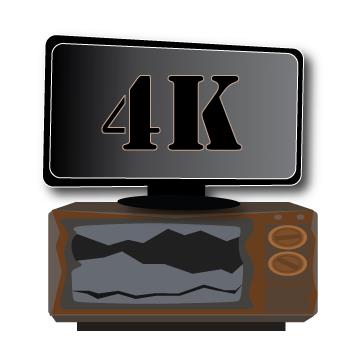It seems now that most Americans own a high definition TV, and the old days of the cathode ray tube (CRT) televisions, (the ones before flat-screens that could weigh about as much as a refrigerator) are gone.
They have been replaced by sleek liquid crystal display (LCD) and plasma screen TV’s. Thinner than your average college textbook and maybe only slightly heavier, these devices usher in a new era of picture quality. However, this era may too be coming to an end as three manufacturers have unveiled TV’s that will make your brand new flat-screen look…dated.
This year, Sony, LG, and Toshiba unveiled the highest resolution TV’s ever offered to consumers. The resolution is called 4K, which refers to the nearly 4,000 horizontal pixels that are packed into these displays. For comparison, the top TV’s today can only display 1,920 horizontal pixels. To make room for all those extra pixels, the displays revealed by Sony, LG, and Toshiba range from 55 to 84 inches. These behemoths aren’t cheap either, with the LG and Sony 84-inch models bearing a price tag of over $20,000.
Assuming you’re willing to sell your car and take out a loan to purchase one of these beauties, you may want to think twice. While the idea of ultra high definition (UHD) television in the home is exciting, it doesn’t exist yet. There is no TV show, Blu-Ray movie, or online video that has a resolution even close to 4K. In fact, the only way to view 4K content right now is at the movie theater. These new sets have an up-convert feature that scales 1080p video up to 4K, but the results aren’t spectacular, and certainly not worth a small fortune.
So what is the point of releasing the pinnacle of home entertainment if you can’t even take advantage of it? Well, it’s mostly just a promise of what’s to come. Now that more cameras capable of recording 4K are becoming available, we may start to see some content recorded in the new resolution and delivered to the home in the future.
Boosted resolution is only part of the recent advancements in TV technology, and most of them are being taken advantage of right now. The backlights in LCD’s have been replaced with tiny LED’s (light-emitting diodes), giving you a 45-inch TV about as thick as your thumb, and with better viewing angles. Google is teaming up with manufacturers to create smart TVs that let you search for movies and TV shows not only on networks and on demand video, but also the entire internet.
So even though 4K content may not be available for the average American, we still have plenty of exciting new TV’s with even more ways to rot our brains. For now, those UHD goliaths will remain but a reminder of the future of TV.










